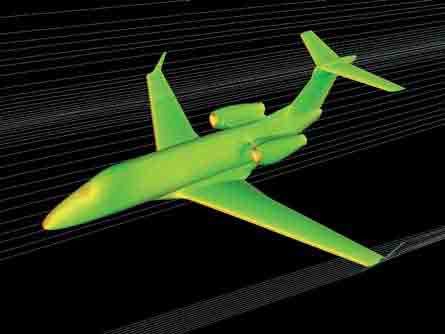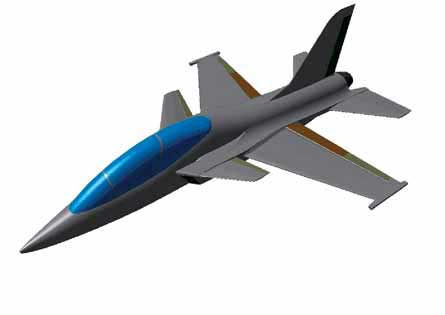Is there a solution to the shortage of young aerospace engineers? Brazil's Embraer believes a new approach will launch a fresh generation of skilled graduates
The 1970s were all about excess and the pace of change was frantic. The decade saw the emergence of new aerospace companies on both sides of the Atlantic that were to grow strongly in the 1980s. But few developed more exuberantly that Brazil's Embraer, which was created in 1969 to build the utilitarian Bandeirante 19-seat regional turboprop and, by 1989, was manufacturing attack and trainer aircraft and designing its most successful product - the ERJ-145 regional jet.
But the worldwide ranks of aerospace engineers would soon bear the brunt of the industry's cyclical downturn in the early 1990s. Over the following decade, the profession was to suffer severe cutbacks as the commercial recession combined with global falls in defence spending, widespread corporate downsizing and the tail-off of the baby-boom demographic, which led to a shortage of graduate recruits.
Advanced manufacturing demands new engineering skills |
This combination of factors began a global erosion of a vital aerospace resource - talent. Embraer knew that, if nothing was done, the failure to replenish the wellspring of youthful talent spelled trouble. The Brazilian manufacturer had already been forced to reduce manpower by 3,000 during the 1990s downturn, and by the time it began developing the E-Jet family of large regional jets to follow the best-selling ERJ-145, its design offices were in danger of collective paralysis.
Brazil was not producing enough aeronautical engineers, which was leading to a chronic loss of critical skills. As the design workload was increasing, the engineering headcount was reducing - resulting, at best, in over-long programme development. At worst, it meant compromising on design quality. Embraer was forced to look for alternative engineering resources and sought a short-term solution by hiring from as far away as Indonesia, Russia and South Korea. But it was a stop-gap measure, and did nothing to solve the long-term lack of home-grown resources.
Old engineers
"Embraer is suffering exactly like Airbus because both businesses were established in the 1970s," says Embraer veteran Paulo Roberto Serra. "Engineers are all becoming old, like me. We need to be replaced." Now retired, Serra's professional life reflects the history of Embraer. A mechanical engineer of 36 years' experience with the Brazilian airframer, he played an active role in programmes such as the AMX, Bandeirante, Brasilia, Tucano and Xingu.
"This is a classic problem where the real needs of industry and the development of engineering talent have been obstructed by both economic performance and the relative weight of the baby-boom generation," says Serra. Embraer's response was to launch the fast-track Engineering Specialisation Programme (ESP) for young graduate engineers in 2001. "We have tried to turn the situation on its head, to give us a chance of transmitting the lessons learned and not to leave a gap between generations," adds Serra, who has spent the past five years as a flight safety teacher on Embraer's innovative programme.
 |
|---|
|
 |
The fundamental objective of the course is to train non-aeronautical engineers from mostly civil and mechanical engineering disciplines, accelerating the process and fine-tuning it to meet the company's specific needs. About 10% of the teaching staff are from overseas, and so contribute external industrial opinion and methodology, and just over half are from Embraer itself.
The course also focuses on advanced engineering design tools to offset the risk of swift obsolescence, centred on 1,500h of Catia experience per group, complemented with Fluent, Nastran/Patran and BLWF design codes, all customised to satisfy Embraer's immediate needs. "We tweak the syllabus every year. It adapts continuously," says Serra.
Embraer currently employs more than 17,000 people, most of whom are based in Brazil. By June this year, 574 ESP graduates had joined its ranks, replacing nearly all the company's itinerant job-seekers. These will eventually be complemented by 270 students due to join the company by March 2007.
ESP entry exams are stiff. Held in 12 Brazilian cities, each intake attracts about 4,000 graduate engineers - although only 2% of candidates are eventually accepted after intensive preliminary screening which, in turn, is followed by English tests, technical written exams and group dynamic personal profiling, culminating in a final interview process.
Candidates must start the ESP application process within two years of their original graduation to even be considered. That means graduates have an average age of 26-27 - with a highly variable percentage of women (but averaging 7% compared with the 15-20% female technician contingent within Embraer).
"In Brazil, a very small percentage of the population has access to an engineering degree and even once you have one, there remains a 40:1 selection [ratio] for the ESP," says Serra.
Successful candidates receive a scholarship and, on completion of the course, are immediately hired to work in their chosen speciality, such as aerodynamics, structures, flight controls, customer support, avionics, electric and electronic systems, and on-board software.
There are salary increases throughout the programme and, at the full contract stage, successful graduates can expect a salary equivalent to an engineer with three years' experience.
To become a member of the elite group of ESP graduates, students join the programme full-time for 18 months. And it is not for the faint-hearted: students will clock up a total of 1,600h - equal to four MBAs - of classes, lectures, team projects and a final dissertation, in addition to 1,000h of mandatory study.
The course is divided into three phases. The initial six-month phase involves basic aeronautical engineering training through a range of 27 courses, followed by a 10-week period of 15 courses divided equally into aeronautics and systems engineering. The next three months are spent drilling down into specialities within these two disciplines through 32 courses covering aerodynamics, structures and loads on the aeronautics side, plus avionics, propulsion and hydromechanics on the systems side.
Industrial solutions
The five-month third phase sees things become more interesting. Students are expected to apply a blend of synthesis and analysis skills to produce high-quality and economically sound industrial solutions. They are divided into groups of 25, with all specialities represented. Each is asked to develop an aircraft design following Embraer methodology as closely as possible. It is at this stage that they make the transition from school to a working engineering department environment.
Other essential skills learnt here include time management planning, market analysis and budgeting for building a business case project management, presentation techniques and total quality techniques.
Each group is given a set of aircraft characteristics and produces an initial definition and preliminary design with an accompanying report. "They each have the liberty to contradict and criticise the proposed design given to them," says Serra. "Indeed, there is a determination not to focus on the theoretical and use the group dynamic to the full."
Every two months, the students have to demonstrate their progress. "We force them to innovate, to try new things. They often start with the most bizarre aircraft configurations, but always end up proposing a normal one," says Serra. "We haven't managed any radical departure from the more orthodox aircraft configuration of a fuselage and two wings."
At the end of the final phase, each group presents its design to a specially convened meeting of managers and directors using Embraer's Virtual Design Centre. Projects that students have worked on include an unmanned air vehicle, two 25-passenger quick-change cargo aircraft, four corporate jets, two 33-passenger regional jets and an advanced military trainer.
"This last one, the military trainer, will be one of the best that the classes have produced," says Serra. "We have been really impressed with this."
Employee retention will be critical at a time when aeronautical design expertise is at a premium, he says. "So far, 100% of ESP graduates have stayed with the company. A few students have left the course, but this was mostly due to the cultural differences of people from the north of Brazil coming south to São Paulo."
Serra remains realistic, and adds: "At the end of the day, it's an open market - but we try to offer incentives so they will stay. One thing is for sure - this programme is of extreme strategic importance for Embraer. I believe in it. I am attached to it. It's a fantastic idea."
Source: Flight International
























